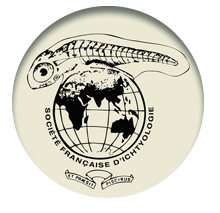Development of feeding and swimming functions in larvae of Chionodraco rastrospinosus (Channichthyidae)
The development of characters related to feeding and swimming in Chionodraco rastrospinosus Dewitt & Hureau, 1979 larvae was examined in 35 specimens (24.5-45.4 mm standard length, SL) collected from the Indian Ocean sector of the Southern Ocean. Of these, 16 larvae were cleared and stained to examine osteological development. Larvae of 26 mm SL appeared capable of grasping, biting, and sucking feeding based on their possession of fundamental oral cavity elements and teeth. Furthermore, feeding function improved with element growth and tooth increase until 35-37 mm SL. The complete pectoral fin ray number was attained at ca. 35 mm SL. The pelvic and pectoral fin lengths increased rapidly by ca. 37 mm SL. Vertebrae were first observed at 38.3 mm SL, but neither dorsal nor anal fin elements appeared until 40.3 mm SL. The delayed formation of the vertebrae and dorsal and anal fins indicates that the larvae do not swim actively using caudal propulsion. Swimming is accomplished by paired-fin development until 35-37 mm SL, and is enhanced by the development of vertebrae and caudal fin elements thereafter. Chionodraco rastrospinosus larvae until 35-37 mm SL are inferred to be ambush-style predators with early development of feeding function, in contrast to their slowly developed swimming function.


